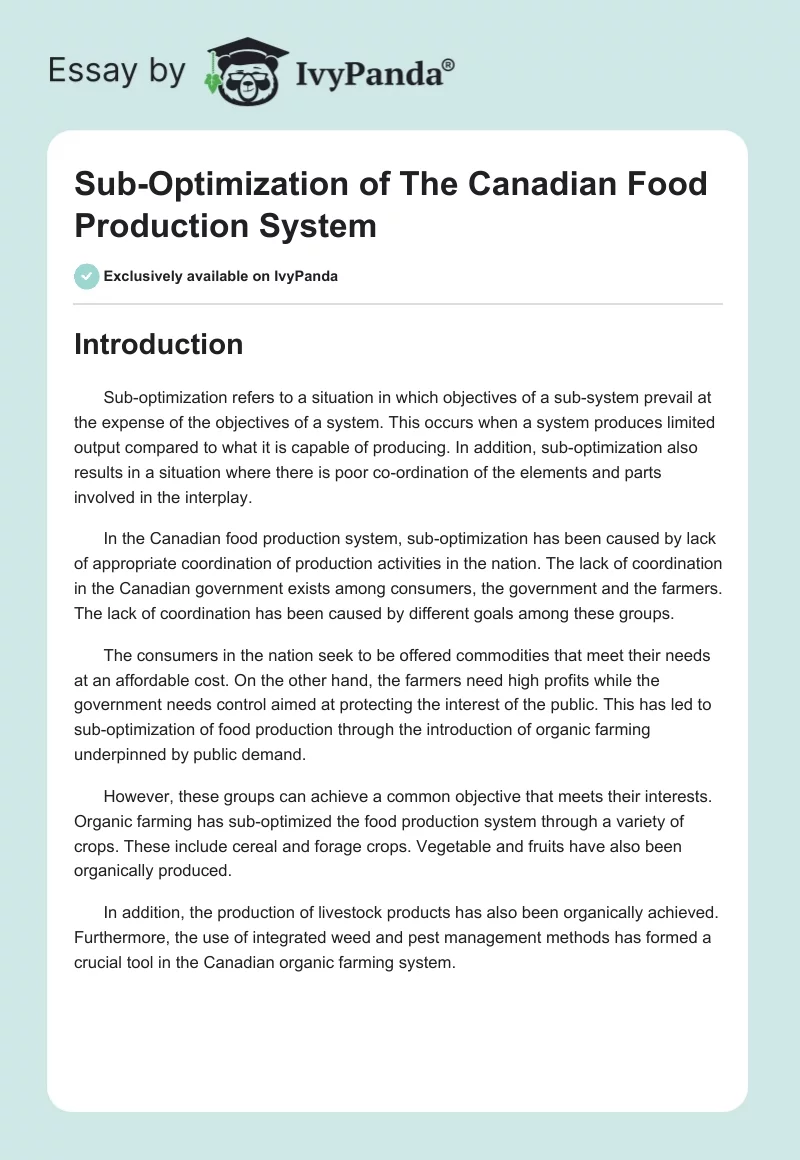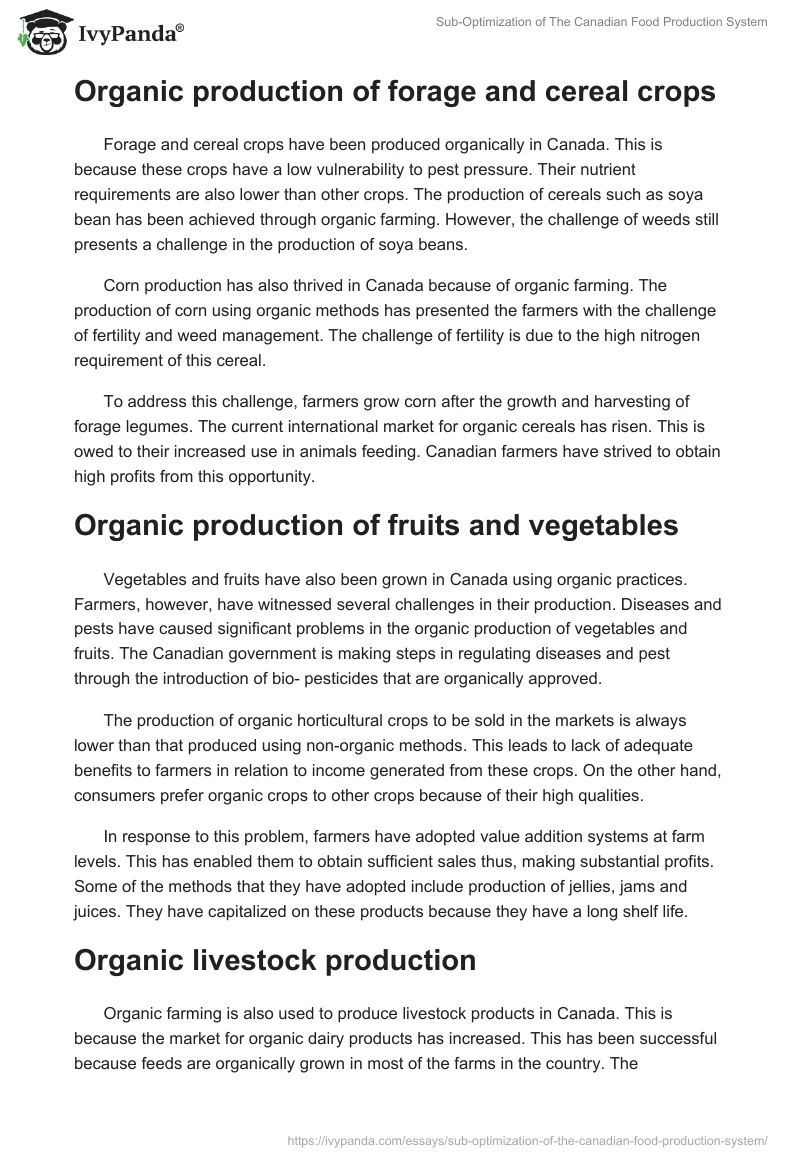Introduction
Sub-optimization refers to a situation in which objectives of a sub-system prevail at the expense of the objectives of a system. This occurs when a system produces limited output compared to what it is capable of producing. In addition, sub-optimization also results in a situation where there is poor co-ordination of the elements and parts involved in the interplay.
In the Canadian food production system, sub-optimization has been caused by lack of appropriate coordination of production activities in the nation. The lack of coordination in the Canadian government exists among consumers, the government and the farmers. The lack of coordination has been caused by different goals among these groups.
The consumers in the nation seek to be offered commodities that meet their needs at an affordable cost. On the other hand, the farmers need high profits while the government needs control aimed at protecting the interest of the public. This has led to sub-optimization of food production through the introduction of organic farming underpinned by public demand.
However, these groups can achieve a common objective that meets their interests. Organic farming has sub-optimized the food production system through a variety of crops. These include cereal and forage crops. Vegetable and fruits have also been organically produced.
In addition, the production of livestock products has also been organically achieved. Furthermore, the use of integrated weed and pest management methods has formed a crucial tool in the Canadian organic farming system.
Organic production of forage and cereal crops
Forage and cereal crops have been produced organically in Canada. This is because these crops have a low vulnerability to pest pressure. Their nutrient requirements are also lower than other crops. The production of cereals such as soya bean has been achieved through organic farming. However, the challenge of weeds still presents a challenge in the production of soya beans.
Corn production has also thrived in Canada because of organic farming. The production of corn using organic methods has presented the farmers with the challenge of fertility and weed management. The challenge of fertility is due to the high nitrogen requirement of this cereal.
To address this challenge, farmers grow corn after the growth and harvesting of forage legumes. The current international market for organic cereals has risen. This is owed to their increased use in animals feeding. Canadian farmers have strived to obtain high profits from this opportunity.
Organic production of fruits and vegetables
Vegetables and fruits have also been grown in Canada using organic practices. Farmers, however, have witnessed several challenges in their production. Diseases and pests have caused significant problems in the organic production of vegetables and fruits. The Canadian government is making steps in regulating diseases and pest through the introduction of bio- pesticides that are organically approved.
The production of organic horticultural crops to be sold in the markets is always lower than that produced using non-organic methods. This leads to lack of adequate benefits to farmers in relation to income generated from these crops. On the other hand, consumers prefer organic crops to other crops because of their high qualities.
In response to this problem, farmers have adopted value addition systems at farm levels. This has enabled them to obtain sufficient sales thus, making substantial profits. Some of the methods that they have adopted include production of jellies, jams and juices. They have capitalized on these products because they have a long shelf life.
Organic livestock production
Organic farming is also used to produce livestock products in Canada. This is because the market for organic dairy products has increased. This has been successful because feeds are organically grown in most of the farms in the country. The government of Canada ensures that the meat products are free from avian, mammalian and fish by-products. In addition, it also prohibits all genetically produced substances.
The government stipulates that animals identified with traces of these substances should be separated from the organic livestock herds. The separated animal cannot be sold for slaughter or production of organic meat products. Vaccination is only allowed in situations in which livestock diseases cannot be regulated by other organic methods.
Quality and value of organic products
Production of food using organic method ensures that interests of consumers, farmers, and government are met. Organically produced foods have higher returns than food products produced using non-organic methods. The premiums obtained from organic crops depend on the consumer markets handled by farmers. This is because consumers play a significant role in the prices of commodities.
Various consumer markets include; consumers, retailers, wholesalers and processers. High prices of organic commodities ensure that the production costs of the farmers are lowered. Thus, organically produced foods are of high quality and adequately meet the demands of various consumers. In addition, it enables authorities to have control over all activities relating to farming, products and their prices.
Conclusion
In conclusion, the food production system in Canada has been sub-optimized through emphasis on organic farming as opposed to other farming methods. Organic farming ensures that the interests of the government, consumers and farmers are met.


